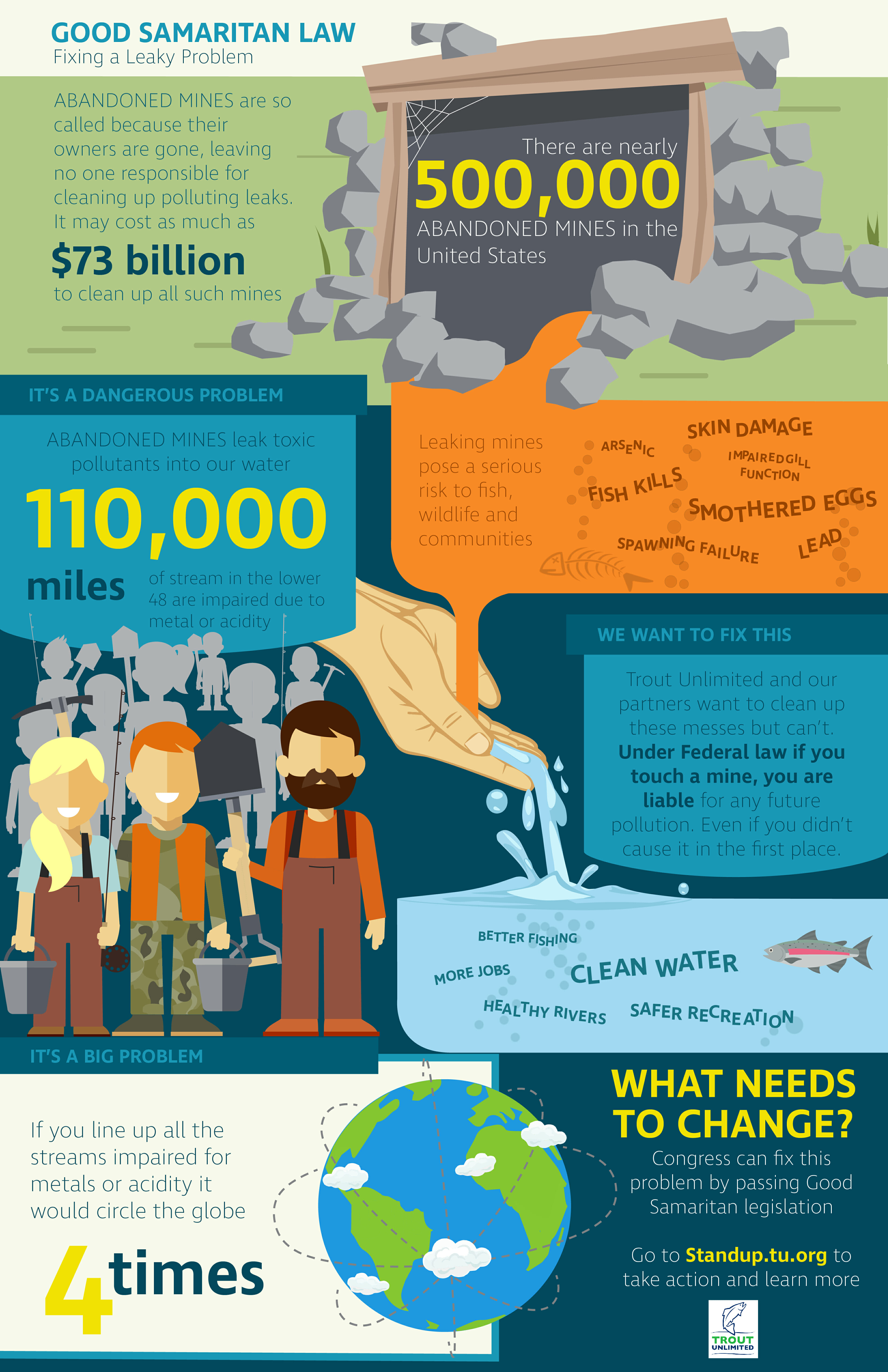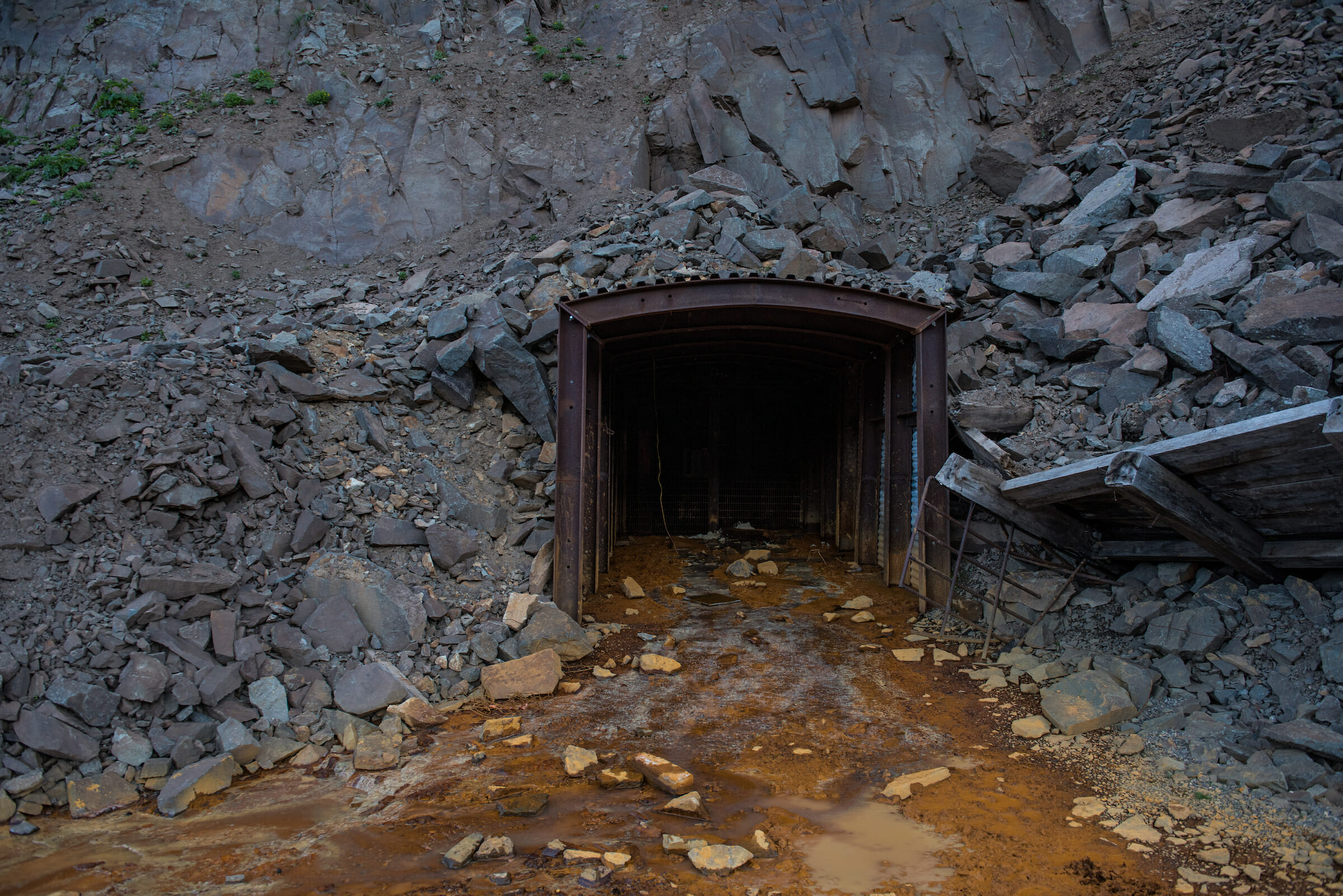By Randy Scholfield
We are bouncing along in four-wheel drive vehicles, high in the Clear Creek watershed west of Denv
er, overlooking beautiful forest vistas and steep hillsides laced with snowmelt creeks. We are here with a group of reporters to show them a dark secret hidden in this backcountry.
It’s hiding in plain sight.
Amid the stunning vistas and wildness, there is evidence around every corner of historical mining activity: Rusting boilers. Decrepit wood structures. Barren, sterilized soil. And leaking mine openings that perpetually drain orange, heavy metal-tainted water into the creeks, hour after hour, day after day.
Many years ago, this backcountry was one of the most lucrative and affluent gold-mining areas in Colorado. That mining heritage is rightly a source of pride for many communities and helped to build our country.
But today, we’re paying a steep price for how that mining was done, without knowledge of environmental damage, or that it would be felt long into the future. Across the West, some 40 percent of watersheds are tainted by toxic mine pollution. In Clear Creek County alone, there are more than 4,000 abandoned mine sites, according to David Holm of the Clear Creek Watershed Foundation, which has taken on the cleanup of some sites in the drainage.
“The people who mined here are long gone,” Holm tells the group. And that’s a big problem—because no one is left to take responsibility for the cleanups; these sites are truly abandoned.
Many of the sites are what Holm calls “bleeder” mines, seeping 15-25 gallons per minute of toxic water, 24/7, into our watersheds and water supplies. There are tens of thousands of these bleeder mines dotting the West, adding up to one of our country’s biggest water quality problems affecting aquatic life and sources of drinking water.
“We see an opportunity here to do important environmental work,” he says.
Good Samaritan Legislation – Captions from Trout Unlimited on Vimeo.
The problem: Under present law, so-called “Good Samaritan” groups who have no legal responsibility or connection to a mine and who want to stanch the toxic bleeding—including nonprofits like Trout Unlimited and watershed groups but also local governments and other interested parties—are stymied, ironically, by the very law designed to enhance our nation’s water quality: The Clean Water Act.
TU’s Ty Churchwell notes that the CWA guidelines make a distinction between treating “point-source” and “non-point source” pollution—a distinction that has frustrated many mine cleanup projects.
Under present Clean Water Act regulations, he explains, Good Sam groups may undertake cleanup of “non-point source” mine pollution—for example, the mine waste tailings and piles often dumped near creeks that pollute from dispersed runoff.
 But that same Good Sam group can’t tackle the “point-source” runoff that comes directly from a discharge point—such as leaking mine opening (adit)—because treating these “point-source” sites triggers liability for the site and legal requirements to adhere to water quality standards that are not feasible for most sites. If a Good Sam group reduces pollution but can’t bring the treated discharge up to the strictest CWA standards, they could face legal liability in perpetuity—as in forever.
But that same Good Sam group can’t tackle the “point-source” runoff that comes directly from a discharge point—such as leaking mine opening (adit)—because treating these “point-source” sites triggers liability for the site and legal requirements to adhere to water quality standards that are not feasible for most sites. If a Good Sam group reduces pollution but can’t bring the treated discharge up to the strictest CWA standards, they could face legal liability in perpetuity—as in forever.
“That’s simply a non-starter for most Good Sam groups,” says Churchwell.
TU and other groups have been working for nearly two decades to pass Good Sam legislation, which essentially fixes this technicality in the CWA and provides some legal protection for qualified groups doing abandoned mine cleanups. In other words, it improves the CWA by allowing Good Sams to create more clean water.
We drive up the road, where Jason Willis, TU’s abandoned mine program manager in Colorado, leads the group down a steep hillside to Lion Creek, a small tributary of Clear Creek that runs mottled orange from a leaking adit upstream.
A strong sulphuric smell taints the air. “There is really no aquatic life in this stretch—no fish, no bugs,” Willis says.
He shows where mine tailing piles were dumped along the creek—four feet high—a “non-point” source of pollution perpetually leaching into the creek. TU and partners have removed the tailings and restored the banks with clean fill and varieties of wheatgrass, yarrow and other soil-holding plants.
This is what “non-point source” mine reclamation looks like—and it’s progress. “Little projects like this build over time and incrementally improve the water quality,” Jason says.
But TU is working with one hand tied behind its back. To be most effective, Good Sam groups need a legislative solution that allows them to address the rest of the pollution—the leaching mine openings themselves.
Later, at our lunch stop, the group meets up with Sen. Cory Gardner of Colorado, who is working on a Good Sam bill that he hopes to introduce with bipartisan support in coming weeks.
After years of legislative runs at Good Sam—all of them eventually stalling or falling apart—why is this year different, asks one of the reporters.
“We’ve built on those past legislative efforts,” Sen. Gardner responds, “learning what works and what doesn’t work.”
He believes the version this year—likely centered on a pilot project to show results and “proof of concept”—will be easier to pass. Moreover, the new acting EPA chief, Andrew Wheeler, understands the abandoned mine issue and has expressed support for a Good Sam solution.
Sen. Gardner lauds the efforts of TU and partners to bring resources and innovation to the abandoned mine problem—but Good Sam legislation, he says, is a “final piece” of the puzzle.
“We just need to get this done,” he says.
The group caravans up another forest road near Empire to the Doctor Mine. In this drainage near treeline, in partnership with the Arapahoe‐Roosevelt National Forest, TU has helped reclaim a slope blighted by mine runoff—replanting it in lush meadow brimming with wildflowers and marsh grasses. It looks beautiful, a place to pitch a tent.
But just up the slope, the Doctor Mine continues to seep heavy metals into the watershed. Day in and day out.
Willis points out that, using passive treatments such as a bioreactor or wetland, TU could probably improve the Doctor Mine outflows to between 50-70 percent of CWA water quality standards—but failing to get to 100 percent, TU could be legally liable for the mine in perpetuity.
So it sits untreated.
It doesn’t make sense: Why make the perfect the enemy of the good? Isn’t achieving an incremental percentage of environmental quality standards better than nothing at all?
Meanwhile, up in the mountains, across the West, tens of thousands of abandoned mines will continue to bleed toxins, day in and day out, into our waters and trout streams.
Want to help? Go to Standup.tu.org and raise your voice. Tell Congress to pass Good Sam this year.



